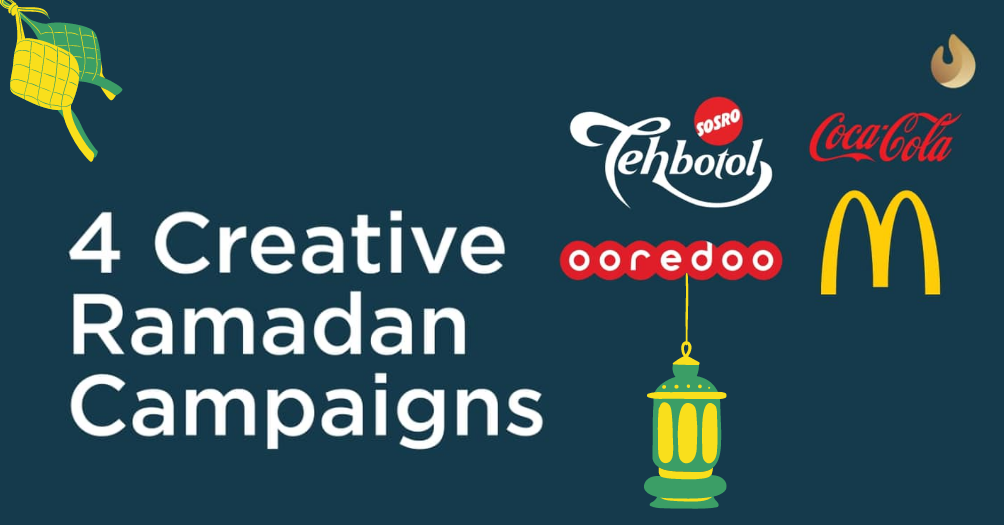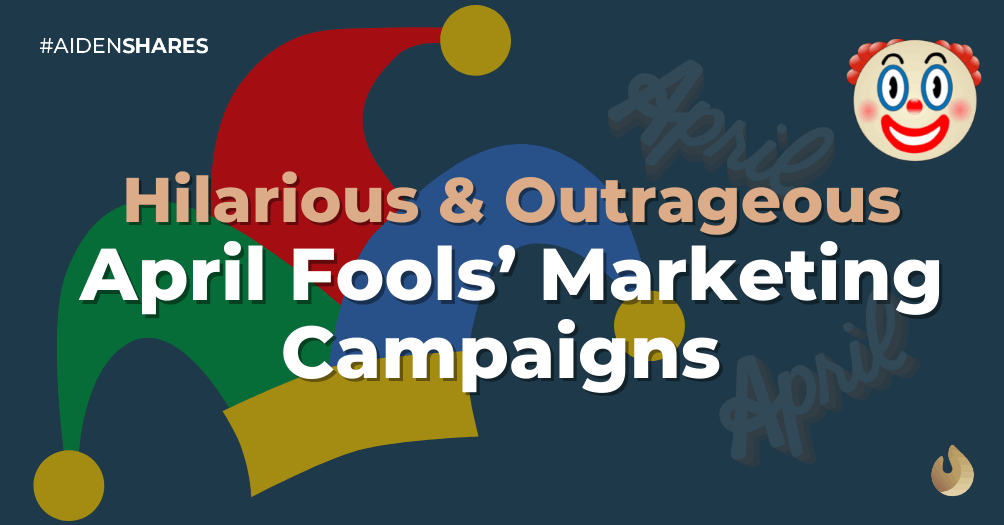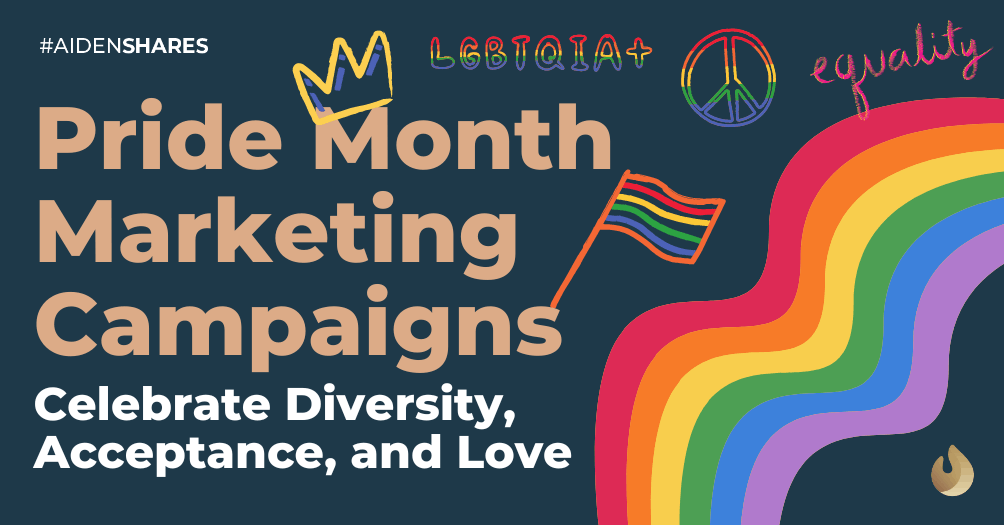Recalling Colour Psychology and Its Impact for Your Brand 🎨
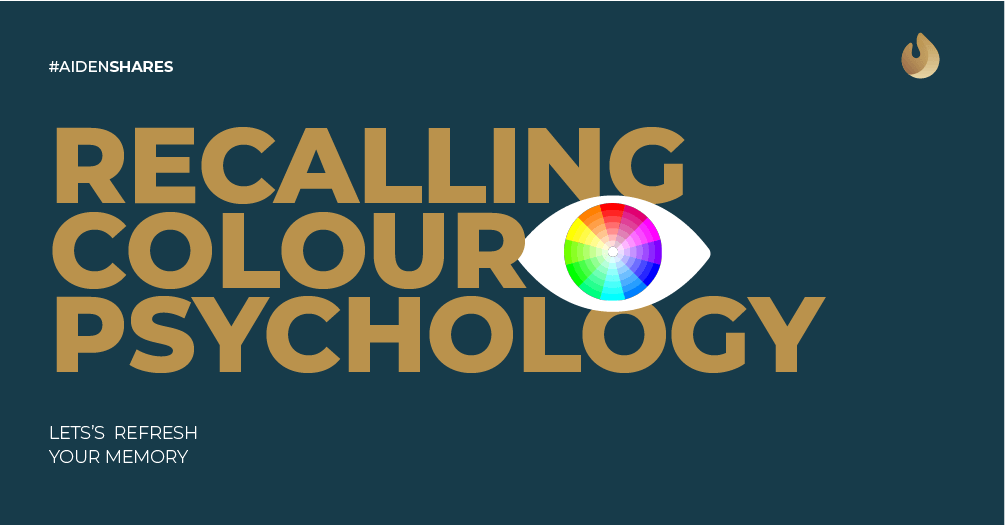
Have you ever wondered why Starbucks choose green for their logo? Or why McDonald’s went with red and yellow?
They’re chosen for a reason! It is because colour psychology plays a very significant role in branding.
Beyond aesthetics, colour helps in communicating a brand’s positioning and niche. Having the right colours can boost brand recognition and reception. Over time, colour can help people recognise a brand.
Need proof?
That is what Starbucks achieved with their redesigned logo. Their iconic siren and green colour are enough to make people identify their brand. They do not even write ‘Starbucks’ on their logo anymore.
So, what is colour psychology? 🎨
Colour is not just an observation of the eye; it means something. There are a lot of studies that cover what colours signify. One particular title that you may be interested in is Impact of Color on Marketing.
The study explained that colours are information. They convey moods, feelings and help in shaping up attitudes towards a product.
They also help differentiate you from your competitors (or your potential competitors may use your colour scheme to mimic your brand). Hence, they play a massive role in integrated marketing.
The meaning of colour ✅
Colour is an essential element of your brand. For instance, the right colour choice can bring excellent first impressions on potential customers. They make your brand stand out.
When potential customers visit your website, your colour choice can determine whether they will stay to read content on your website or leave.
Colours could affect how people perceive your brand—let’s recall some of the common colours’ positives and negatives.
Red
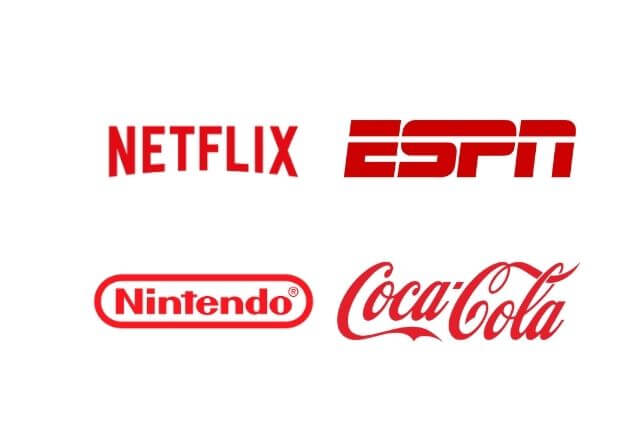
People perceive colours differently. So, what do you feel when you see red? Is it a sign of strength or danger?
Red could evoke strong positive feelings, such as:
- Affection and love
- Friendliness
- Strength
- Passion
- Desire
But you have to be careful not to overuse red due to its negative connotations:
- Danger
- Fear
- Stress
- Aggression
In marketing, people use this colour to stimulate appetite, captivate attention, and encourage people to purchase during clearance sales. If you notice, most “sale” or “buy now” buttons are red.
Some brands synonymous with red are Netflix, Coca-Cola, ESPN, and Nintendo.
Orange
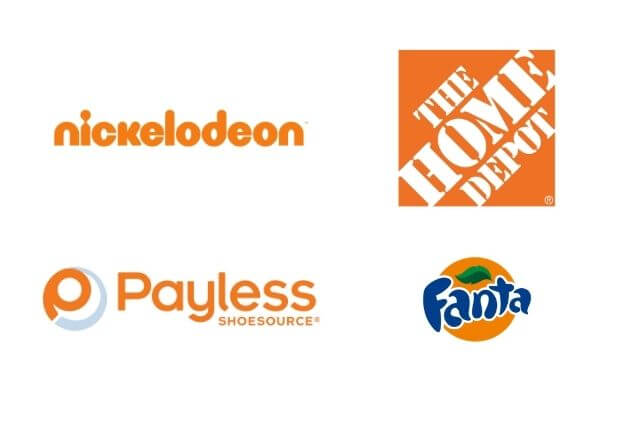
Orange is a secondary colour – made by mixing red and yellow. This bright colour represents feel-good emotions, such as fun, warmth, motivation, enthusiasm, and a positive attitude. Orange could be your choice of colour to evoke comfort during hardship.
On the other hand, orange may accidentally denote negatives like being overly proud and inexpensive.
Brands associated with orange are Nickelodeon, The Home Depot, Payless ShoeSource, and Fanta. For its usage in marketing, some prefer this colour as a background for a call-to-action (CTA) button.
Green
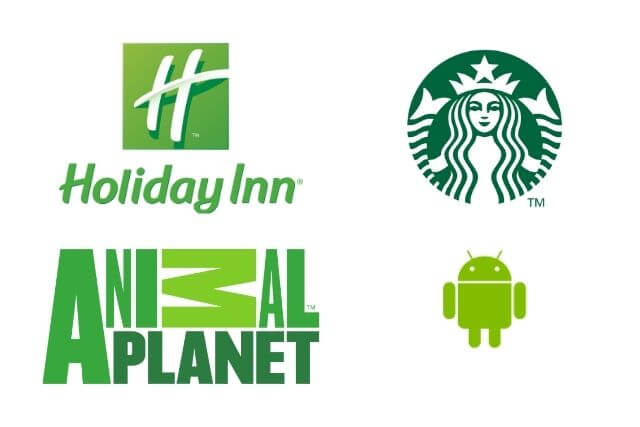
Green is synonymous with nature. It is the colour of grass, trees, and even the shade of aurora lights! However, people could also perceive it negatively as green also symbolises materialism and jealousy.
When used correctly, this is the best colour to imply:
- Growth
- Harmony
- Well-being
- Environment
Typical usage of this colour in marketing is for tourism. People often use this colour to represent nature for lodging. It is helpful to attract people who are longing to reconnect with nature for their holiday.
Brands you may love using this colour are Holiday Inn, Starbucks, Animal Planet, and Android.
Blue
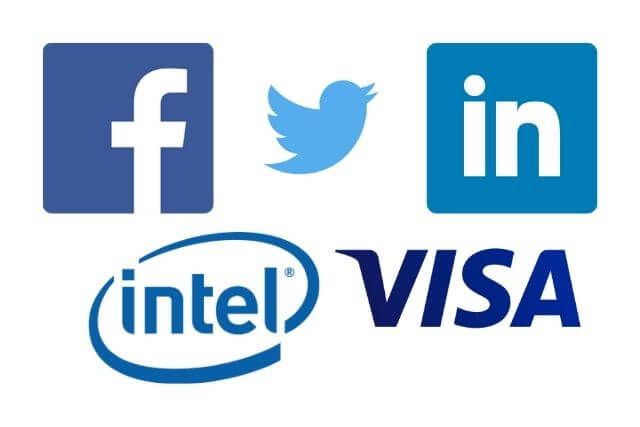
Do you notice that a lot of big brands are using blue as their primary colour?
Facebook, Twitter, and LinkedIn are the big blue brands in social media. In the tech world, Intel, Samsung, IBM, and Dell are blue. And in the financial industry, known brands, like Visa and American Express, use this colour.
So, what makes blue become the go-to colour for these brands?
It represents trustworthiness, dependability, and reliability. Also, blue brings a sense of calm for many people.
Like any other colour, blue may evoke negative feelings for some. People may feel distant, cold, and grief when they see the colour.
Black
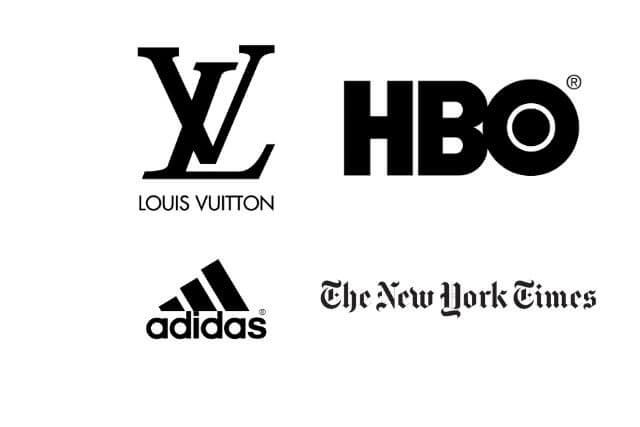
A versatile colour that has many interpretations depending on the context. The lack of light might make this colour looks dull. Its darkness is associated with grief and, unfortunately, death.
However, the colour psychology of black may also help people see your brand as a luxurious one. Black denotes elegance, professionalism, and prestige.
Louis Vuitton, HBO, Adidas, and The New York Times are a few brands that use black.
Yellow
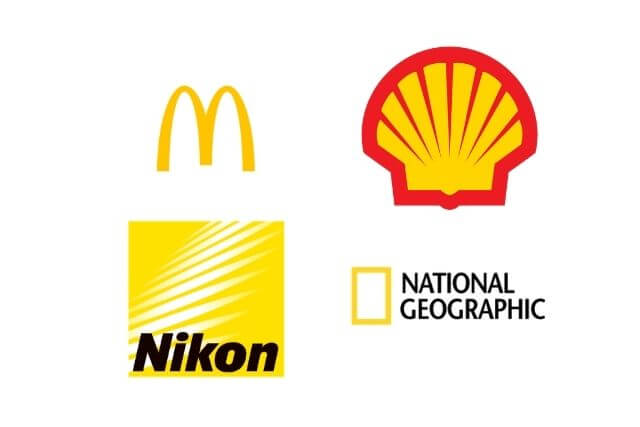
Much like orange, yellow embodies happiness, energy, and confidence. It is also one of the colours that you can use to attract attention, especially in marketing. The bright nature of this colour makes it hard for people to ignore it.
But you may want to consider using it sparingly. It strains the eyes and may heighten the feeling of anxiety or fear.
Some brands have been incorporating yellow as their colour for many years. These include McDonald’s, Shell, National Geographic, and Nikon.
Purple
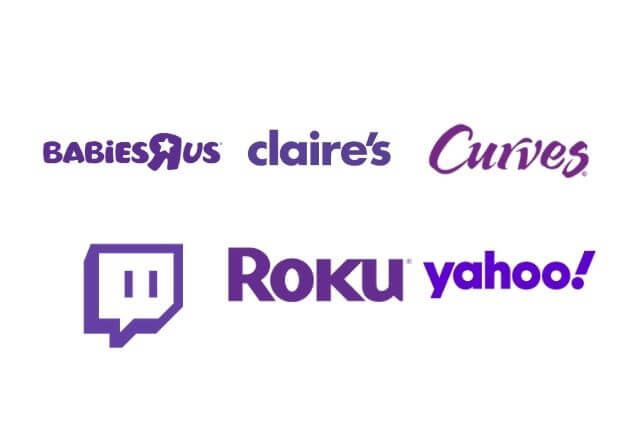
Purple is an intriguing colour. It is a symbol of spirituality and magic. A lot of brands use it on their logo because it represents a few other things.
It is suitable for a feminine audience and technology. Well-known brands that use purple include Babies-R-Us, which targets new moms, Claire’s for teen girls, and Curves—the dedicated gym for women.
In technology, the streaming juggernauts, such as Twitch and Roku, choose purple as their colour. Yahoo also went purple in 2009.
Surprisingly, a lot of brands do not opt for purple. You should see this as an opportunity to make your brand stand out because not many brands use it.
Brown

Brown gives a dependable, rugged, earthy, and vintage impression. These impressions encourage woodworking, coffee, antique shop, and local pubs to use brown for their logo.
It may also play a part in increasing appetite because many chocolate and F&B brands use brown. Brands associated with brown are Gloria Jean’s Coffee, UPS, A&W, and Hershey’s.
However, the overuse of this colour may often be considered boring and rigid.
Pink
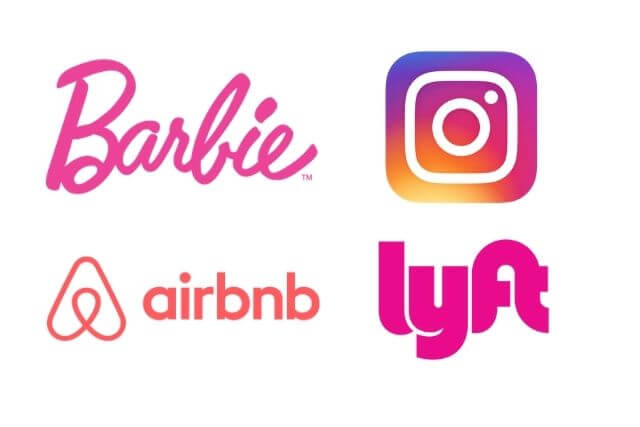
Think of pink as a less intense sibling of red. Pink is a sign of hope, compassion, love and playfulness.
On the other hand, too much of this colour might make your brand look immature and vulnerable. Due to gender stereotypes, some say that pink is not suitable for the male audience.
Pink brands that you may know are Barbie, Instagram, Airbnb, and Lyft.
White
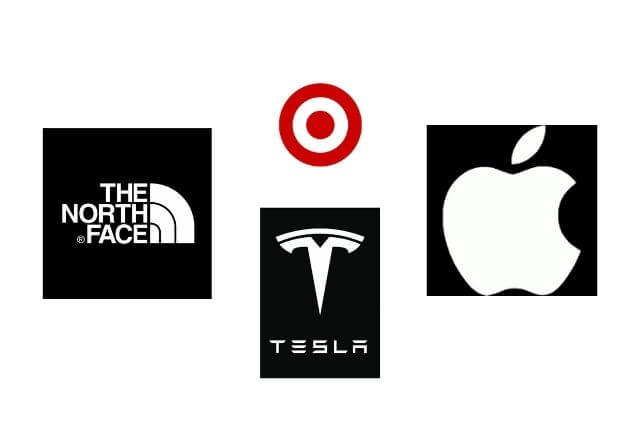
If black represents darkness, then white signifies light. Brands often use white with other colours for their logo. For instance, Target rocking white for its iconic logo. Then, we have the tech giant, Apple, also loving white. Other brands that you may have seen are Tesla and The North Face.
There are several reasons why brands love white. White represents:
- Cleanliness
- Simplicity
- Elegance
Just like the other colours, white also has negative connotations. It resembles emptiness, loneliness, and isolation.
Gold
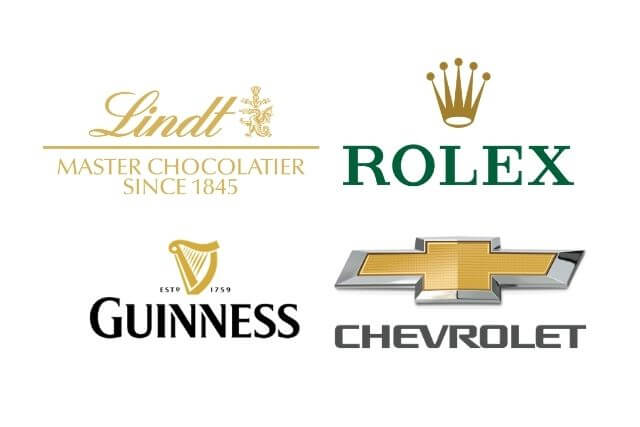
If you are planning to use gold for your brands, you may need to understand its negatives. People might perceive your brands as:
- Self-righteousness
- Egoistical
- Proud
Do not get us wrong; going all gold is a bold choice. Lindt Chocolate is a remarkable example.
People may sense glamour, charm, luxury, wealth, and friendliness. Brands often use gold as a highlight colour instead of the primary colour to minimise its negative connotations. Look at Rolex, Guinness, and Chevrolet; they used some gold in their logo.
Can colour help conversions? Absolutely! 💯
Using colour psychology to your advantage in marketing is a fascinating idea. Some also believe that colours help in generating sales.
How does it work? First, a bright-coloured CTA button will attract people’s attention and create a sense of urgency to make purchases online. You should opt for a hard-to-ignore colour for your CTA button, as statistics show it helps with the conversion rate.
What about offline marketing? Packaging with striking colours may drive people to purchase your product. You can also miss out on sales if your product does not come in specific colours.
Recap of colour psychology 🧾
- Colour serves as the first impression of your brand
- Poor colour choice can affect how people perceive your brand or product
- Colour is just one of many tools for a successful brand
- Opt for a bright-coloured CTA button for your online marketing
- Play with colours to come up with astonishing looks for your products
That is why you want to avoid sending mixed messages to your audience due to colour psychology. Here, at Aiden Creative, we can help with your branding strategy in Singapore. Tap that WhatsApp button to speak with our team and see how we can help you.

